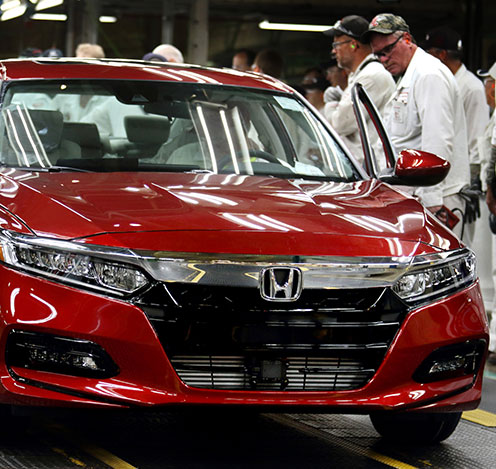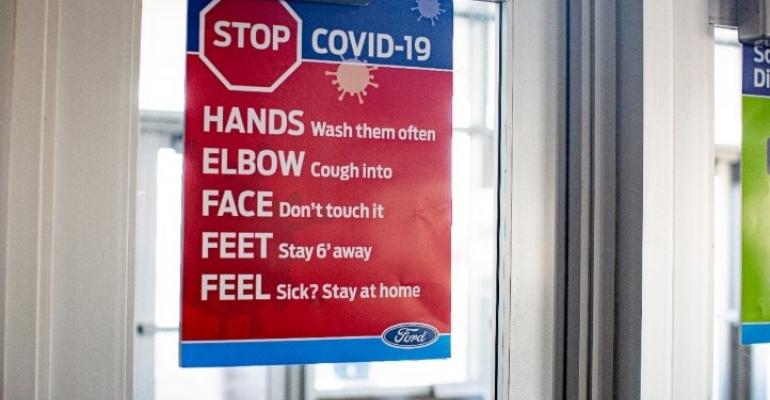Ford becomes the last of the Detroit 3 automakers to announce it will resume production after being shut down by the COVID-19 pandemic, while Honda joins the list of foreign-owned car companies reopening their North American plants.
Plans by the Detroit 3 to begin phased resumption of their North American plants follow Michigan Gov. Gretchen Whitmer’s decision, announced May 7, to allow manufacturing to resume in the state under strict employee health and safety measures.
Fiat Chrysler announced May 5 it would begin a phased reopening of most of its North American facilities the week of May 18. General Motors and Ford made similar announcements May 6 and May 7, respectively.
Ford says its North American parts depots will resume full operations Monday. On May 18, North American assembly plants previously operating on three shifts are to return with two shifts; most two-shift plants will return on one shift; and most one-shift plants will operate on one shift.
Ford’s Flat Rock (MI) Assembly Plant and Oakville Assembly Complex in Oakville, ON, Canada, are expected to resume production the week of May 25 on one shift. Components plants will restart production as needed to support the reopening schedule, Ford says.
The staggered approach allows Ford to effectively implement new safety protocols and provide all employees with proper personal protective equipment as they return to work, the automaker says in a news release.
In announcing its plans to reopen North American plants, Ford officials echo statements made to media during an April 30 conference call that outlined the automaker’s strategy.
“We’ve been working intently with state and federal governments, our union partners and a cross-section of our workforce to reopen our North American facilities,” says Jim Farley, Ford’s chief operating officer.
“We have reopened our facilities in China, successfully begun our phased restart in Europe and have been producing medical equipment in Michigan for more than six weeks and are using the lessons from all of that to ensure we are taking the right precautions to help keep our workforce here safe,” he says.
The ramp-up process will be gradual as workers adjust to the new health and safety protocols and the entire supply chain comes up to speed.
In a statement released in response to Ford’s announcement, UAW President Rory Gamble says: “While the companies have the sole contractual right to determine the opening of plants, our UAW focus and role is and will continue to be, on health and safety protocols in which we have the contractual right to protect our members.
“As we have said, our dialogue with all of our employers and employment sectors about the safety and security of everyone who enters into a plant will continue beyond the reopening of worksites,” Gamble says. “We will continue to advocate for as much testing as possible at the current time and eventually full testing when available.”
Honda, meanwhile, says it will gradually resume automobile, engine and transmission production May 11 at its plants in the U.S. (above) and Canada. The automaker says it will stagger the start-up at each plant, with most facilities using the first day to ensure front-line leaders are trained on new procedures and activities related to COVID-19 prevention.
“Prior to resuming production, associates will learn about the new safety measures and retrain on work processes after the period of suspended production,” Honda says.
Among other automakers in the U.S., Mercedes-Benz on April 30 began operating one of three shifts at its SUV plant in Vance, AL.





